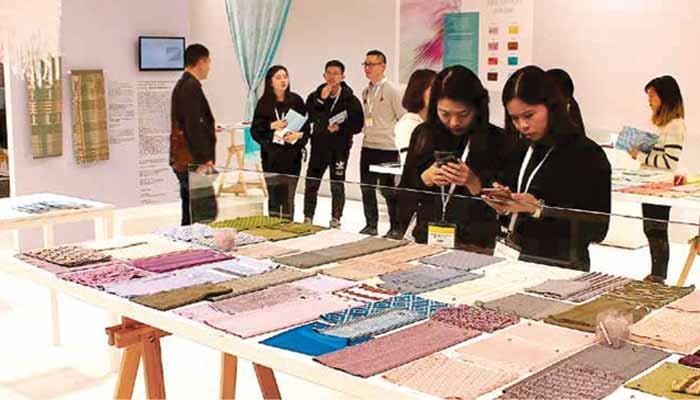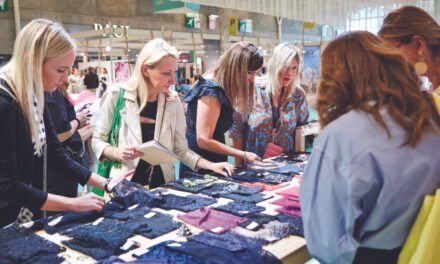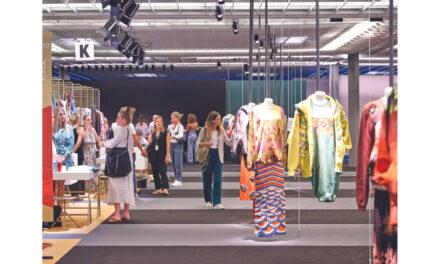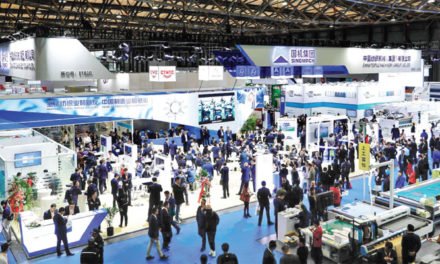SPINEXPO Shanghai Proposes cutting edge developments for next season
S TM PINEXPO Shanghai was held at the World Expo Centre in Pudong, Shanghai, on 5th, 6th and 7th March 2019. This Spring/Summer 2020 edition presented the collections of 183 exhibitors, including 19 knitwear manufacturers. The show welcomed 11,371 visitors and 3,369 entries over two days, bringing the total number of visitors to 14,740, which is TM a record and all the more impressive as SPINEXPO was the only event being held in the exhibition centre, meaning that these numbers were not swelled by visitors to other events.
The number of visitors from China remained stable, with 9,480 visitors (+ 9 per cent), as well as the number of visitors from outside China with 1,891 (+ 12 per cent). The show noted an increase in the number of Japanese visitors, which confirms this country’s economic health indicators, and more visitors from Europe and America. It is not easy to enter the Japanese market and it is not an expanding market, but it is a stable market once penetrated. Prospects on the American market are not positive: Many exhibitors have been severely affected by the growth in Japanese or European brands in this market, which has led to a reduction in orders from local giants and a demand for low-price products or products from South-East Asia. The threat posed by the US Government is one thing, but it is the competition from brands of superior quality and creativity that is the main game changer. American buyers are always focused on price above all else.
In terms of numbers, the show visitors profile included: China total: 9 480, Japan 497, Hong Kong 395, Europe 346, Korea 124, Taiwan 97, Canada / USA 82, Bangladesh 68, Australia / New Zealand 46, South East Asia 38, Middle East / India 55, Turkey 29, Russian Federation 56, Central / South America 28, Africa 15, Others 15.
Most first-time visitors to SPINEXPO Shanghai were seeking alternatives to the increase in the prices of their usual suppliers in order to counteract the large stock/ increasing raw material prices/falling customer consumption equation. The atmosphere at the event was dynamic and highly professional, and in a change from previous editions, all the stands were visited and all the collections studied in scrupulous detail, in a professional atmosphere the likes of which the show had not experienced for a long time. Clients of the key exhibiting groups who are regular exhibitor season after season, and who often include the products of smallerscale spinners in their collections, have begun to buy their products directly from the source, preferring a lower price to the security of suppliers who guarantee them à la carte products or solutions.
It is hard to know whether this trend will last or whether it is a one-off, but it offers medium-scale spinners the chance to find a type of client they would not normally work with. The impact of climate change is also visible and many spinners have either deliberately worked on trans-seasonal products or presented collections for both Spring/Summer and Autumn/Winter seasons. The knitwear market revolves increasingly around reliable suppliers armed with style tips, it has seen a real development in the circular knit sector, with products that may be basic at the moment, but are rapidly becoming more sophisticated.
Morale amongst exhibitors remained positive, but while some are considering focusing on new prospects, others are choosing to remain cautious and see what happens in the coming months. All prefer to rely on the European markets, which are more professional in their approach, if smaller in scale. The event seemed to be divided in two directions. On the one hand were the foreign visitors, who are looking for high-quality products (It heard a number of comments about “tests” on selected products, with negative results resulting in the withdrawal of products from the collections) as well as more competitive prices from spinning companies that are new to them. For these visitors, relationships come second to quality. On the other hand, there are the Chinese visitors, who are looking for products in stock and immediately available, and who are not particularly concerned about product quality.
The cotton spinners are becoming increasingly interested in the circular knit sector because the position of spinners of fantasy yarns or carded wool is weakened by offering fashion TM products. This is why SPINEXPO will be focusing on this sector in particular and proposing cutting edge developments from next season. This sector is all about TM functionality and performance, and SPINEXPO continues to make progress in this direction, thanks to its style team and partnership with Santoni. This area is key and reflects the change in attitude among consumers, a new way of experiencing fashion which, far from being “dead,” is in fact going full steam ahead. This period of reassessing models that, TM until now, have worked is a challenge that SPINEXPO is happy to take on. The event has always focused on adapting to changes of all kinds, be they social, political, intellectual or directional. As for the area encapsulated by the term “sustainability, ”the show has chosen not to expand on this until organisers are clear about exactly what exhibitors and visitors understand by this term.






















